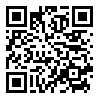year 1, Issue 3 (Fall 2007)
Iran J Med Microbiol 2007, 1(3): 17-23 |
Back to browse issues page
Download citation:
BibTeX | RIS | EndNote | Medlars | ProCite | Reference Manager | RefWorks
Send citation to:



BibTeX | RIS | EndNote | Medlars | ProCite | Reference Manager | RefWorks
Send citation to:
Havaei S A, Pishva E, Tabibian A, Rabani M, Haghshenas F, Narimani T. Cytolethal distending toxin (CDT) produced by Campylobacter jejuni and Campylobacter coliisolated from chikens by tissue culture method in Isfahan. Iran J Med Microbiol 2007; 1 (3) :17-23
URL: http://ijmm.ir/article-1-90-en.html
URL: http://ijmm.ir/article-1-90-en.html
Seyed Asghar Havaei1 
 , Ebtehaj Pishva2
, Ebtehaj Pishva2 
 , Akbar Tabibian2
, Akbar Tabibian2 
 , Mohhamad Rabani2
, Mohhamad Rabani2 
 , Fariborz Haghshenas2
, Fariborz Haghshenas2 
 , Tahmine Narimani2
, Tahmine Narimani2 


 , Ebtehaj Pishva2
, Ebtehaj Pishva2 
 , Akbar Tabibian2
, Akbar Tabibian2 
 , Mohhamad Rabani2
, Mohhamad Rabani2 
 , Fariborz Haghshenas2
, Fariborz Haghshenas2 
 , Tahmine Narimani2
, Tahmine Narimani2 

1- Department of Microbiology, School of Medicine, Isfahan university of Medical Sciences, Isfahan , havaei@med.mui.ac.ir
2- Department of Microbiology, School of Medicine, Isfahan university of Medical Sciences, Isfahan
2- Department of Microbiology, School of Medicine, Isfahan university of Medical Sciences, Isfahan
Abstract: (68324 Views)
Background and Objectives: Campylobacter jejuni is one of the most common bacterial cause of diarrheal
disease in humans throughout the world.
Contamination is mainly linked to the consumption of undercooked food products contaminated with
Campylobacters. The most characterized toxin proposed is CDT, which has been detected in several
Campylobacter species. With regard to the role of broiler chickens in transmission of campylobacter to
human and the possible role of CDT in the pathogenesis of Campylobacter, detection of Campylobacter
producing CDT is necessary .
Material and Methods: In this study 368 rectal swabs were collected from chikens . All the specimens were cultured on Skirrows & Blood agar and incubated in microaerophilic conditions at 42º C for 48-72 h . Hella cell was applied to detect CDT in C.jejuni and coli.
Results: Campylobacter strains were isolated from 114 (31%) of 368 chicken (101 C. jejuni and 13 C. coli). Toxin production inC. jejuniand C. coli was 94% and 76.9 % respectively.
Conclusion: It seems that the majority of C.jejuni and C.coli produce CDT although C. jejuni produces a higher titer.
Material and Methods: In this study 368 rectal swabs were collected from chikens . All the specimens were cultured on Skirrows & Blood agar and incubated in microaerophilic conditions at 42º C for 48-72 h . Hella cell was applied to detect CDT in C.jejuni and coli.
Results: Campylobacter strains were isolated from 114 (31%) of 368 chicken (101 C. jejuni and 13 C. coli). Toxin production inC. jejuniand C. coli was 94% and 76.9 % respectively.
Conclusion: It seems that the majority of C.jejuni and C.coli produce CDT although C. jejuni produces a higher titer.
Type of Study: Original Research Article |
Subject:
Medical Bacteriology
Received: 2013/11/13 | Accepted: 2013/11/14 | ePublished: 2013/11/14
Received: 2013/11/13 | Accepted: 2013/11/14 | ePublished: 2013/11/14
Send email to the article author
| Rights and permissions | |
 |
This work is licensed under a Creative Commons Attribution-NonCommercial 4.0 International License. |



